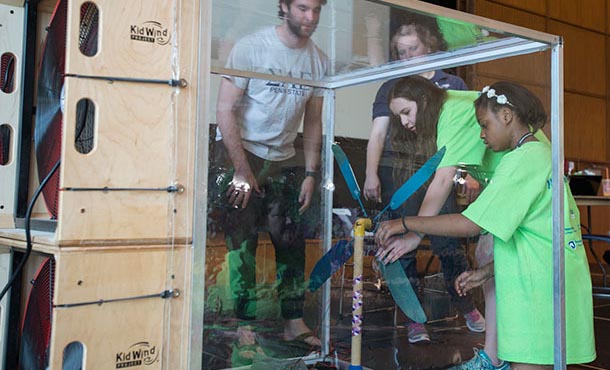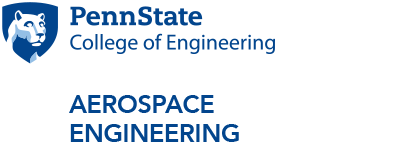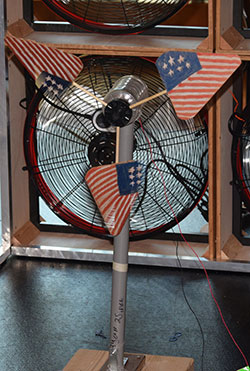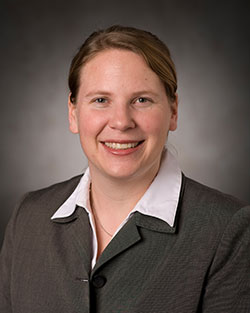
Students test their wind turbine design at the Pennsylvania Wind for Schools Program KidWind Challenge held in the HUB in April.
When it comes to the future of wind energy, kids have all the power
5/18/2017
UNIVERSITY PARK, Pa. — According to the U.S. Energy Information Administration, wind is now the largest source of renewable electricity in the United States, and by 2030, the U.S. Department of Energy (DOE) hopes to use wind energy to generate 20 percent of the nation's electricity. To ensure that happens, a skilled workforce will be required to support the expanded development and application of wind technologies.
Where exactly that workforce will come from is being determined by the outreach efforts of researchers such as Susan Stewart, senior research associate and associate professor of aerospace engineering, and director of the Pennsylvania (PA) Wind for Schools (WfS) Program.
Since 2010, Penn State has managed the PA WfS Program, which is part of the DOE Wind Exchange Program that was initiated to support wind energy education programs at universities, as well as at primary and secondary schools, to address major challenges for the wind energy industry.
“I feel the misinformation that is rampant about wind in our society can be addressed most effectively through our youth,” said Stewart. “The WfS Program is an excellent vehicle for educating kids about wind energy and the local and global impact it can have. The kids are the future. By educating them now, they’ll be more aware of alternate energy sources, can pass that knowledge on to their parents and hopefully, everyone will have a greater impact on our environment in the future.”
Under Stewart’s leadership, the PA WfS Program, in partnership with the Penn State Center for Science and the Schools (CSATS), initially focused on assisting rural schools interested in installing wind turbines. The program has since placed greater emphasis on its additional programming and services including professional development workshops for middle school and high school teachers, KidWind competitions and educational integration of wind turbines.
“Our primary goal is to directly educate students on wind energy but also arm teachers with the knowledge and easy-to-use tools to extend that knowledge in their classrooms,” said Stewart. “In our workshops, we provide educational materials for science teachers to use with their own students, but we also have them go through hands-on activities such as designing turbine blades or generators, and building their own small wind turbines so they can understand the science behind wind energy and conduct the same activities with confidence with their students.”
Many teachers attend the workshops to prepare teams from their schools to compete in the state-wide KidWind Challenge which is an engineering design competition where students construct and test functional and creative wind turbines to generate as much electricity as possible, while learning about the advantages of wind energy. Students are judged on turbine performance in a wind tunnel, turbine design quality and process and knowledge of the wind industry.
“The KidWind Challenge is the ultimate wind energy learning experience for students,” said Stewart. “The hands-on, interactive nature of the competition gives them great insight into the benefits and challenges of harnessing wind power and helps them understand concepts like energy conversion and electricity generation. Most importantly, they gain an understanding of our energy future.”
Although the competition provides students the opportunity to understand wind energy technology and development, it also aims to get students—particularly girls and underrepresented populations—excited about careers in Science, Technology, Engineering, and Mathematics fields related to renewable energy and their relationships to global climate change.
Perhaps one of these students will have the same “a-ha” moment Stewart had when she was in college.
“When I was younger, everyone always said, ‘turn off the lights when you leave and conserve energy,’ and I did, but I didn’t really know why,” said Stewart. “I didn’t make the connection until I had a class where we studied climate change. It was then I understood how much pollution the energy industry was responsible for and was introduced to the prospects of renewable energy. I fell in love with it and decided that’s what I was going to study.”
Through the PA WfS Program, Stewart hopes she can help children make that same connection and help develop a powerful future wind energy workforce.
“I know we’re all doing a better job now as it relates to wind energy and renewable energy, but I want to be a part of making sure that is true,” said Stewart. “I don’t want kids to be oblivious to where power comes from and not understand the impact of something that seems as simple as turning a light switch off.”
It seems obvious where that power is going to come from.





